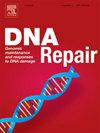从荧光焦点到序列:用高通量测序技术照亮DNA双链断裂修复
IF 3
3区 生物学
Q2 GENETICS & HEREDITY
引用次数: 1
摘要
研究DNA双链断裂(DSB)修复的技术传统上主要依赖于荧光读数,无论是通过显微镜还是流式细胞术。高通量测序(HTS)的出现为研究DSB修复机制创造了新的机会。在这里,我们回顾了一套基于hts的检测方法,用于研究DNA修复的三个不同方面:检测断裂端,蛋白质募集和途径使用。我们强调了高温超导技术为更好地理解DSB修复过程提供的新机会。本文章由计算机程序翻译,如有差异,请以英文原文为准。
From fluorescent foci to sequence: Illuminating DNA double strand break repair by high-throughput sequencing technologies
Technologies to study DNA double-strand break (DSB) repair have traditionally mostly relied on fluorescence read-outs, either by microscopy or flow cytometry. The advent of high throughput sequencing (HTS) has created fundamentally new opportunities to study the mechanisms underlying DSB repair. Here, we review the suite of HTS-based assays that are used to study three different aspects of DNA repair: detection of broken ends, protein recruitment and pathway usage. We highlight new opportunities that HTS technology offers towards a better understanding of the DSB repair process.
求助全文
通过发布文献求助,成功后即可免费获取论文全文。
去求助
来源期刊

DNA Repair
生物-毒理学
CiteScore
7.60
自引率
5.30%
发文量
91
审稿时长
59 days
期刊介绍:
DNA Repair provides a forum for the comprehensive coverage of DNA repair and cellular responses to DNA damage. The journal publishes original observations on genetic, cellular, biochemical, structural and molecular aspects of DNA repair, mutagenesis, cell cycle regulation, apoptosis and other biological responses in cells exposed to genomic insult, as well as their relationship to human disease.
DNA Repair publishes full-length research articles, brief reports on research, and reviews. The journal welcomes articles describing databases, methods and new technologies supporting research on DNA repair and responses to DNA damage. Letters to the Editor, hot topics and classics in DNA repair, historical reflections, book reviews and meeting reports also will be considered for publication.
 求助内容:
求助内容: 应助结果提醒方式:
应助结果提醒方式:


